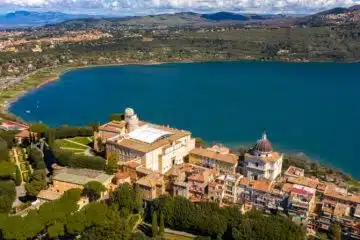Sunday Scripture: Our connection with the wedding at Cana
Wednesday January 13, 2010
By Father Timothy Schehr
Second Sunday in Ordinary Time: Isaiah 62:1-5; 1 Corinthians 12:4-11; John 2:1-11
On the list of most popular Gospel scenes, the wedding at Cana has to be near the top. One reason for its appeal is its connection with ordinary life. We have all been to weddings and can easily put ourselves in the scene: animated conversation, toasts to the bride and groom, tears of joy from family and close friends.
It is curious, though, that in this Gospel reading we are never introduced to the bride and groom. The groom does appear near the end of the account but only in a passive role as the headwaiter marvels at the quality of the wine which, against all custom, has only now been made available to the guests.
And among those guests are Mary, Jesus and His disciples. We might have expected Mary and Jesus to arrive together. But the evangelist introduces them separately in the account. When Jesus arrives He is not alone; He has disciples with Him, no doubt those who joined Jesus in the previous chapter: Andrew, Peter, Philip, Nathaniel, and one unnamed disciples (John the evangelist?).
Mary takes the initiative. Her son has arrived with a following, so it is clear He is nearing the time of His public ministry. It seems she can hardly wait for Him to give some sign to the people. A perfect opportunity presents itself when the wine runs short. In His exchange with His mother, Jesus seems to understand how passionate she is about His purpose and the hour of His glory. It is clear to Mary that Jesus will do something; she prepares the servers to stand ready for whatever command He may give them.
Jesus directs the servers to fill six large jars with water. They fill them “to the brim.” This detail may suggest the water became wine as it was drawn. The servers wanted to store up as much of this good wine as possible without losing any of it.
The prophets used the image of abundant wine to represent the wonderful future God had in store for the people. Amos, for example, says that in those blessed days the juice of the grape will run down the mountain sides (Amos 9:13). Through this miracle at Cana, Jesus makes it clear those expectations of the prophets are at last being fulfilled. The Lord’s disciples witness this sign of glory and begin to believe in Him.
This miracle at Cana also connects with Isaiah’s oracle in the first reading. Isaiah has good news for the exiles. He tells them God is going to bring them home and make them great. In the past they thought of themselves as separated from God. They were “forsaken” and “desolate.” But no more! God will call them fondly “My Delight” (Hephzibah in Hebrew) and “Espoused” (Beulah in Hebrew). The prophet even goes so far as to describe the nation as the bride and God as the bridegroom.
In his letter to the church in Corinth, Paul marvels at the all the gifts displayed in that community of faith through the power of the Holy Spirit. Paul goes through quite an impressive tally of gifts. They include wisdom, knowledge, healing, prophecy and interpretation. These gifts are just what we might expect from people we could look upon as spiritual descendants of the bride and groom at Cana.
Father Schehr is a faculty member at the Athenaeum of Ohio.









